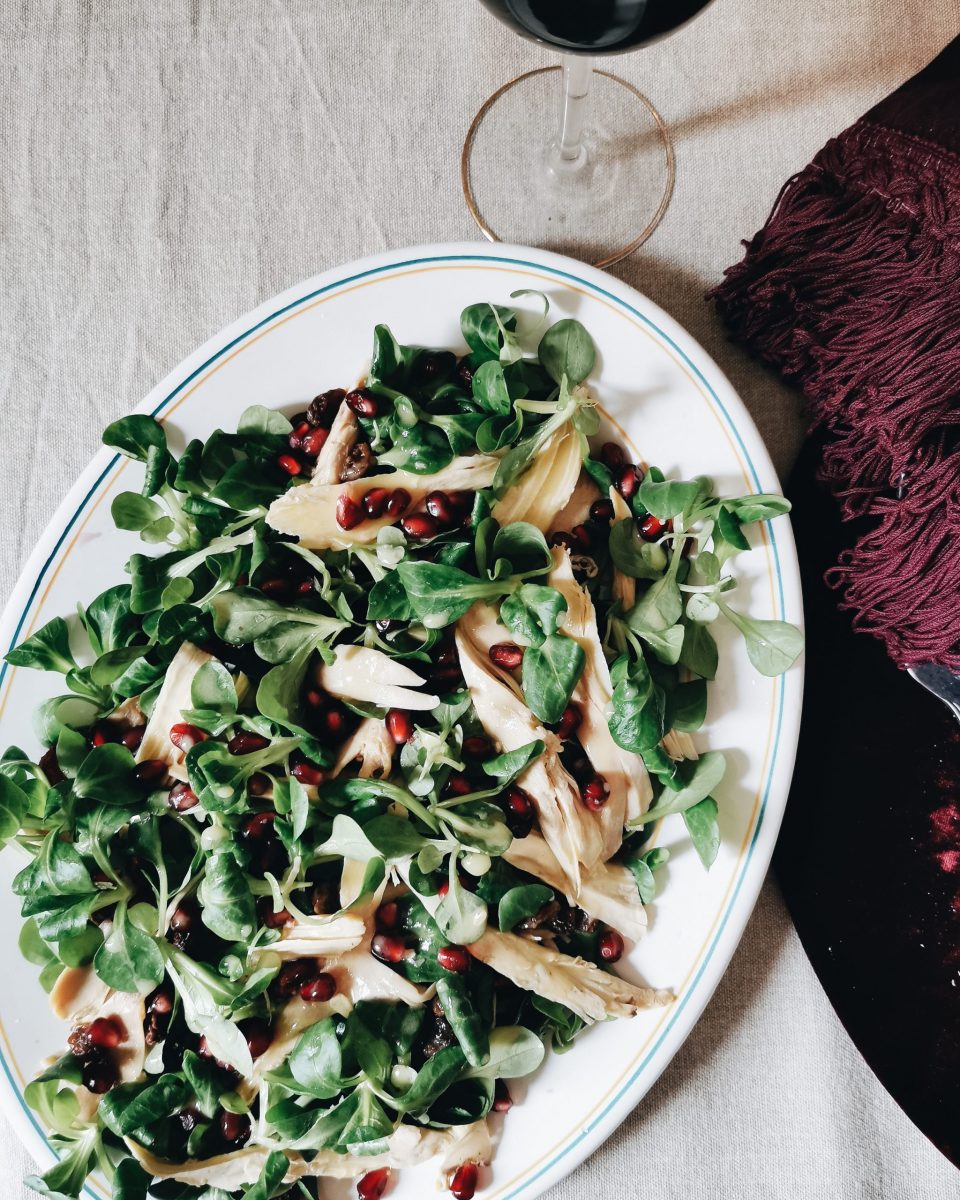
This is the simplest recipe, which is part of the beauty of it for me. All you need is a really good, organic, free range chicken and you’re halfway there.
Around Christmas and New Year’s in Italy, it’s not unusual to see cappone, or capon, a castrated rooster, on offer and this would be one of the classic ways to prepare cappone too. Castration of a rooster has been practised since ancient times, initially being a way to keep roosters together with chickens in their coop, and then kept as a tradition that guarantees very flavourful, succulent meat.
Capon broth has been a popular dish for the winter solstice since the Middle Ages, where it was appreciated for its nutritive and comforting properties and even used as medicine for anyone ill. Capons themselves were often present on noble tables at Christmas time, given a gifts from local farmers who had raised them (there is a famous exchange of capons in Alessandro Manzoni’s I Promessi Sposi, one of Italy’s most important novels). From central Italy such as Le Marche heading north through Tuscany, Emilia Romagna and finally in Piemonte, you can easily find brodo di cappone still on people’s tables for special occasions at the end of the year.
Typically, you might serve it as tortellini in brodo (the ultimate), or perhaps with passatelli (a dough made with breadcrumbs, eggs and Parmesan) but it is even delicious in tazza (in a mug, where it is sipped) and you can even of course use it as a base for minestre (soups) but when you have a very good chicken broth there is something about keeping it simple so you can enjoy the full flavour.
My butcher Andrea Falaschi suggests cooking cotechino in this brodo rather than plain water, cotechino (a large, boiled pork sausage, one of the most ancient of all Italian sausages and particularly connected to northern Italian regions of Emilia Romagna, Lombardy, Veneto and Trentino) being another classic of new year where it is eaten on a bed of lentils, the flat round legumes resemble coins and so a symbol of prosperity for the new year.

Once you’ve made your broth and you have the leftover boiled chicken, pull apart the meat and separate it from the bones and skin and this of course can and should be enjoyed in other ways — at Christmas I served insalata di cappone, a salad of valeriana (lamb’s lettuce), poached capon, pomegranate seeds and sultanas revived in water with a vinaigrette (a version of which will appear in Cinnamon and Salt, my new Venetian cookbook) and for boxing day we made chicken sandwiches (I chop the meat and add finely sliced spring onion and celery, chopped walnuts, a squeeze of lemon juice and mayonnaise to bring it all together).
And with any other leftovers you can of course make the ultimate chicken noodle soup with the broth, adding some vegetables, herbs and pasta to your liking — as Laurie Colwin wrote, “The best soup I have ever eaten was made from a friend’s leftover Christmas pheasant, the remains of the potatoes Anna, peas, cabbage and stock.”

Brodo di pollo (Chicken broth)
Use cappone if you like, it is significantly larger than your average chicken so you should make sure to use a large pot that fits it nicely so that it will be completely covered with water. Try not to chop it into pieces if you can help it. Some recipes for brodo di cappone include juniper berries, peppercorns or other spices, but I abide by the simpler the better rule — when you have a very good chicken that is really all you need and extra additions just hide the true flavour. You can also find a really great beef broth recipe from my favourite old Italian cookbook by Artusi here.
Makes about 3-4 litres of broth.
- 1/2 chicken
- 1 onion
- 1 carrot
- 1 celery stick
- 2 bay leaves
- salt to taste
Place the chicken in a pot large enough to hold it. Peel the onion and if small, keep it whole, otherwise halve it and add to the pot. Wash the carrot and celery stick and cut in half and place in the pot, along with the bay leaves. Cover with cold water (depending on the capacity of your pot and size of your chicken, about 3-4 litres).
Turn the heat to low-medium and keep an eye on it as it gets hotter — you really do not want this broth to boil but only barely simmer for about two or even three hours, covered. Skim the surface as any impurities come out. After two hours, add salt if you like and taste (I like to do this at the end or make it optional so that you have more flexibility for using this broth for different preparations. You can add salt in the step when you are preparing a dish instead, for example). The chicken should be falling apart and the broth should taste and smell wonderful. You can continue cooking the broth further, covered, if you like you can now uncover to reduce it for further flavour, depending on how you would like to use it. For this tortellini in brodo, 2 hours of the gentlest simmering was enough.




Comments
Love this chicken broth recipe. So simple and so good. Fantastic. Great for tomorrow to start lunch. Thanks
It looks easy to make, and I hope the process goes just as well as it is described. Thank you for sharing!